Life on Land: Can Animals & Plants Survive Climate Change?
9 minute read
Updated on: 14 Dec 2020
We now know that animals, plants and other organisms across the world are at risk of extinction - and climate change is a big threat. So how can species stay alive?
They have three options:
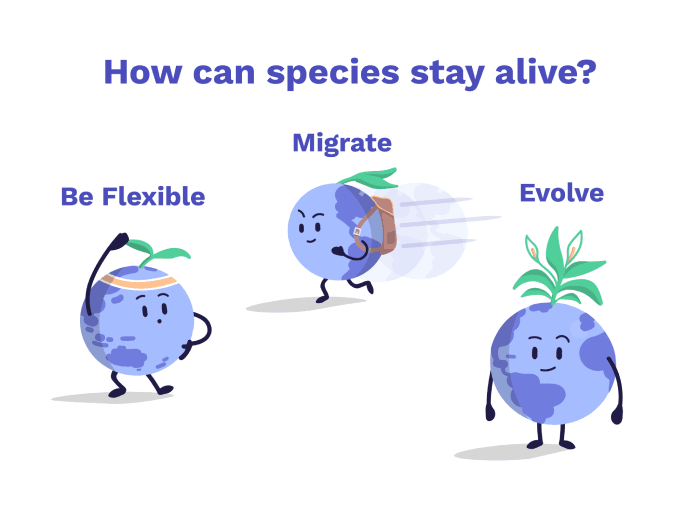
Three ways to adapt
Be Flexible
All organisms have evolved “adaptations” - features that help them survive in their environment. These can relate to behaviour, body parts or things happening within the body.
All of these do! But how fast the response is depends on the type of adaptation.
Behavioural changes are usually the fastest, and help prevent body temperatures becoming too high during heatwaves, which could otherwise kill animals. Behavioural temperature regulation is particularly important for cold-blooded animals (like reptiles) because they regulate their body temperature using their surroundings
.
Other behaviours also can help protect species from floods and wildfires - like the cotton rats which call and carry their young away from fires.
Bodily changes are also important. As we mentioned in the Extinction chapter, flooding land with seawater makes it very salty, which can dehydrate plants. Plants which are able to regulate their fluids will be better adapted to deal with more frequent flooding.
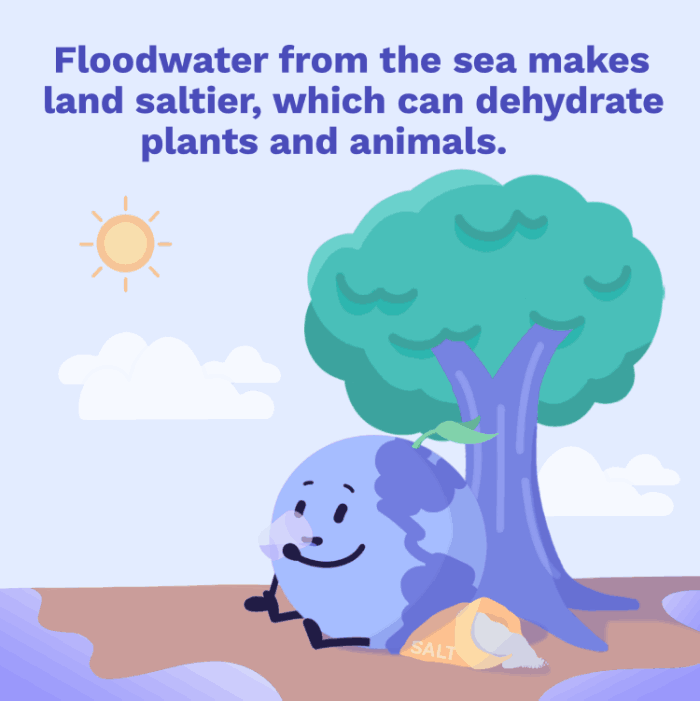
Adapting to saltier environments
Migration
Global warming of 2°C is likely to mean that 5-20% of our land will be home to a completely different type of ecosystem. Why?
Climate-driven changes in temperature and rainfall affect what can grow in an area, which in turn changes what can live there. One way wildlife can respond is by migrating (moving) to a more suitable habitat.
Species are generally migrating towards the poles (by 17km per decade) or uphill (by 11m per decade) to reach cooler temperatures. But these are only averages – many species are moving much slower
.
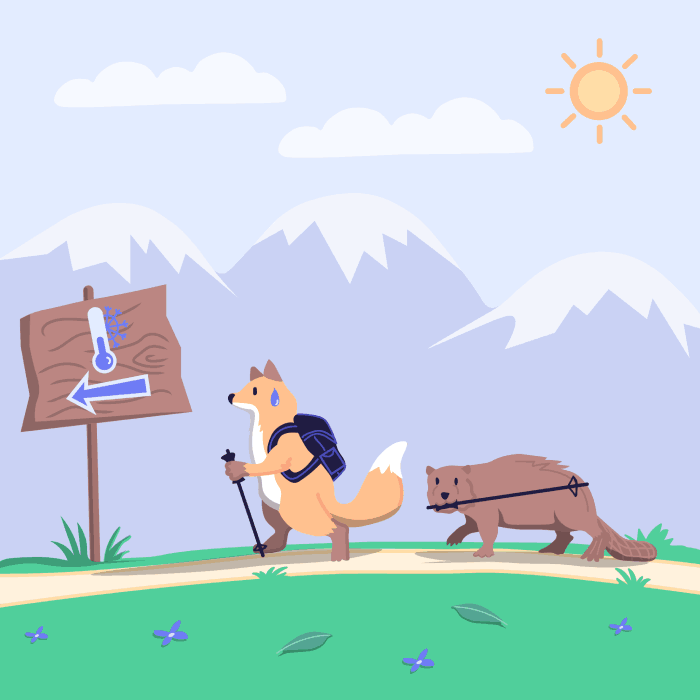
Animals migrating
But can species move fast enough, and will there be suitable places for them to go? Barriers can prevent populations from migrating quickly and effectively. For example:
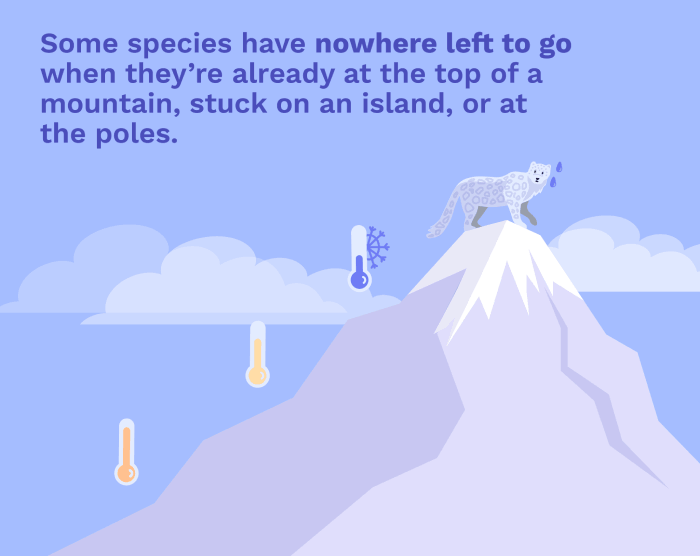
Some species have nowhere left to go when they’re already at the top of a mountain, stuck on an island, or at the poles
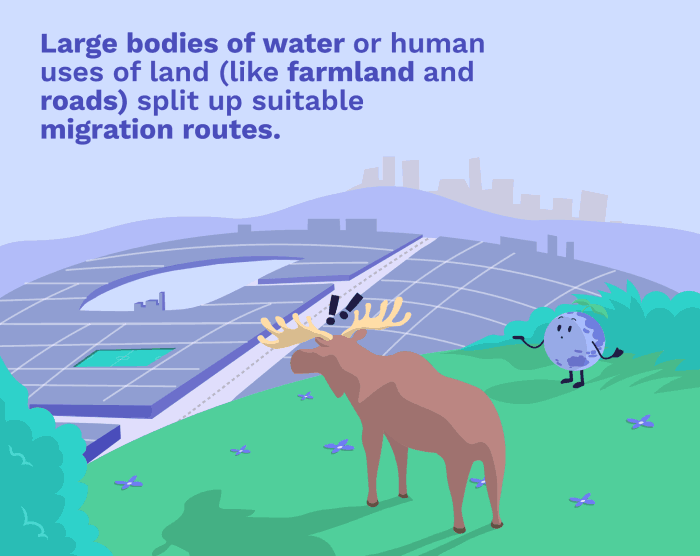
Geographical barriers, like large bodies of water, or human uses of land (like farmland and roads) split up suitable migration routes
Migrating in time (time travel?!)
Even animals that aren’t directly affected by climate change may be forced to migrate. This is so they can maintain interactions with organisms they depend on.
But then things get even more complicated when the species you depend on moves not only in space but also in time!
Warmer temperatures due to climate change are causing spring to arrive earlier.
In response, some species are doing things earlier, like nesting, breeding and migrating, to try and match the earlier availability of food.
There’s a big problem if the species that need to interact don’t match up in time or space anymore. When the seasonal cues of one species are affected, this has knock-on effects for many other species in the ecosystem
.
For example, pied flycatcher populations that change to match their food are doing much better than those that don’t!
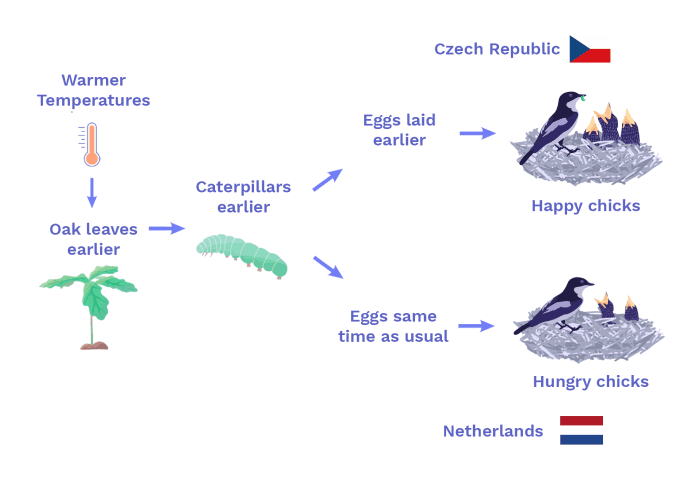
Adaptations to earlier springs
The breeding times of Pied Flycatchers in the Czech Republic aren’t changing as fast as those in the Netherlands, compared to when caterpillars are emerging. This means chicks are left with less food when they hatch. As a result, populations have fallen by 90%!
Rather than the direct impacts of climate change, most of the negative impacts of climate change on wildlife will happen by affecting interactions like these.
Trying new things
Changes to where and when species are found allow different species to interact in new ways. This creates opportunities for new adaptations.
In the Arctic, polar bears are arriving onshore 22 days earlier on average due to sea ice breaking up earlier. Now, these polar bears encounter snow geese incubating their eggs and have started eating them! While these eggs help, they’re not as good as seals - there’s still a 70% chance that polar bear population sizes will fall by a third by 2050
.
Evolve
Over longer timescales, changes may occur in the organism’s DNA. When new and useful genes appear in an individual, they can spread through a population over many generations.
Genetic changes can also affect migration. Central European blackcaps usually migrate southwest for warmer winters
. In the last 50 years, genetic changes have led to a new population that fly a shorter route northwards to the UK instead, now that winters are warmer due to climate change
.
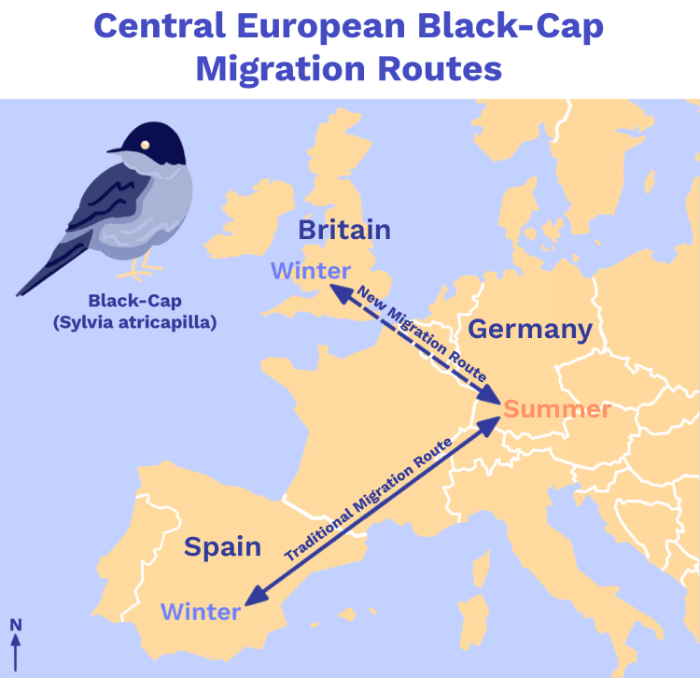
Central European blackcap migration routes
Of course, there are many other possible adaptations not mentioned above and scientists are still studying how organisms might adapt in the future.
Some species might also have biological constraints that slow the rate of adaptations evolving:
- Having long life cycles: individuals take a long time to reach sexual maturity and produce offspring
. For example, houseflies have a life cycle of less than three months
, compared to a bowhead whale which can live over 200 years
.
- Producing few offspring
: useful genes are less likely to be passed on.
- Having slow rates of genetic change
: it takes longer for potentially useful genes to appear.
Scientists can study these, and other traits, to assess which species or populations are most at risk due to climate change.
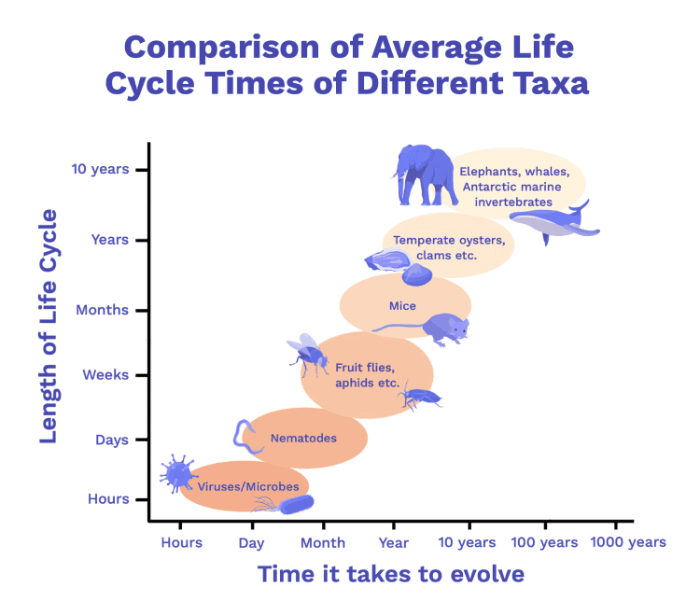
Average life cycle times of different taxa
Are organisms adapting fast enough?
Climate change isn’t a new problem, historically speaking. However, while evidence from past climate changes show wildlife can and has adapted, the current rate of change is faster than ever before
.
Unfortunately, it is unlikely that all species can migrate fast enough to keep up with predicted temperature changes.
Globally, it’s predicted that species will need to move a minimum of 420 metres per year! This is about 10x faster than species needed to move during the climate change at the end of the last ice age
.
Species in some habitats will need to shift faster than others – mangroves, deserts and flooded grasslands are amongst the fastest-changing habitats, while mountains are the slowest.
Furthermore, habitat areas are predicted to shrink for the majority of species with 1.5-2°C warming. 18% of insects, for example, will have less than half of their current habitat size if global warming reaches 2°C
.
Conclusion
There are currently many threats to life on land, a very significant one being climate change. The fast rate of global warming might mean that species can’t adapt or migrate fast enough to survive
. We must slow down the pace of warming if we want to protect ecosystems and the services they provide to humans.
